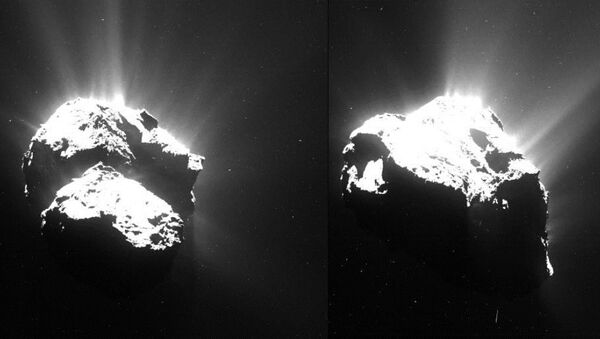An international research team discovered the ice in crystalline form on the surface of comet 67P Churyumov-Gerasimenko, Churi for short, indicating that it was formed 4.6 billion years ago — the results of the experiment have been published in the Astrophysical Journal.
The comet, which is part of the planet Jupiter family, has found to have ice crystals on its surface that could have originated in space before the solar system or the sun was formed in conditions described by scientists as protosolar nebula.
Hi @ESA_Rosetta! Comet #67P on 05 Mar 16 from a distance of 20km (more at https://t.co/lNzznIHGkw) pic.twitter.com/tyzkA2AS3a
— Rosetta OSIRIS (@Rosetta_OSIRIS) 10 March 2016
By analyzing chemicals trapped in the ice on the comet's surface, researchers were able to determine the age of the ice crystals using a mass spectrometer — which is an instrument that can measure the masses and relative concentrations of atoms and molecules. A statement from the French National Center for Scientific Research (CNRS) said:
"If comets are made of crystalline ice, this means that they must have formed at the same time as the solar system, that than earlier in the interstellar medium."
Before Life Began
The discovery of ice crystals on Churi could have implications on future research surrounding how the earth and solar system began life.
"In October 2014 [the mass spectrometer] first measured amounts of molecular nitrogen (N2), carbon monoxide (CO) and argon (Ar) in Churi's ice," a statement from the French National Centre for Scientific Research (CNRS) said.
The levels of nitrogen and argon gas in the ice led the researchers to conclude that is had a crystalline structure, suggesting the ice on the surface of the comet could have been formed before the solar system, or even at the same time.


